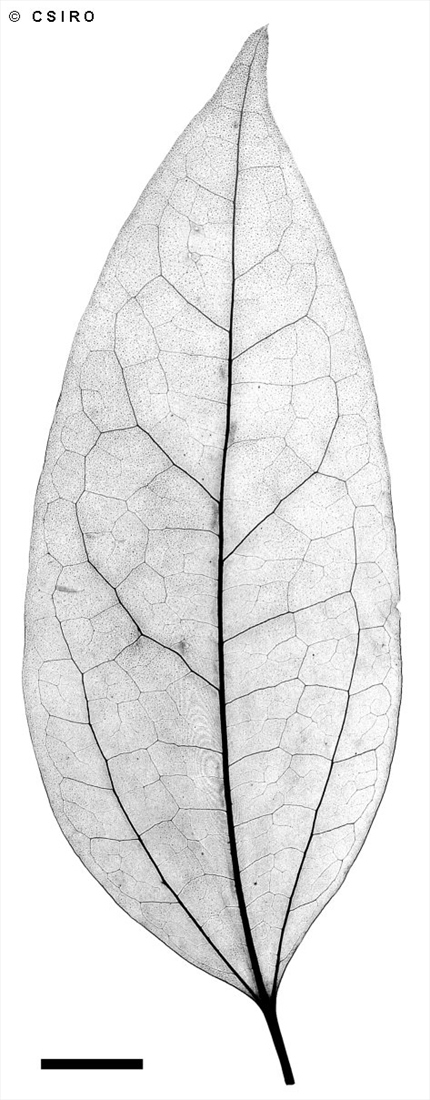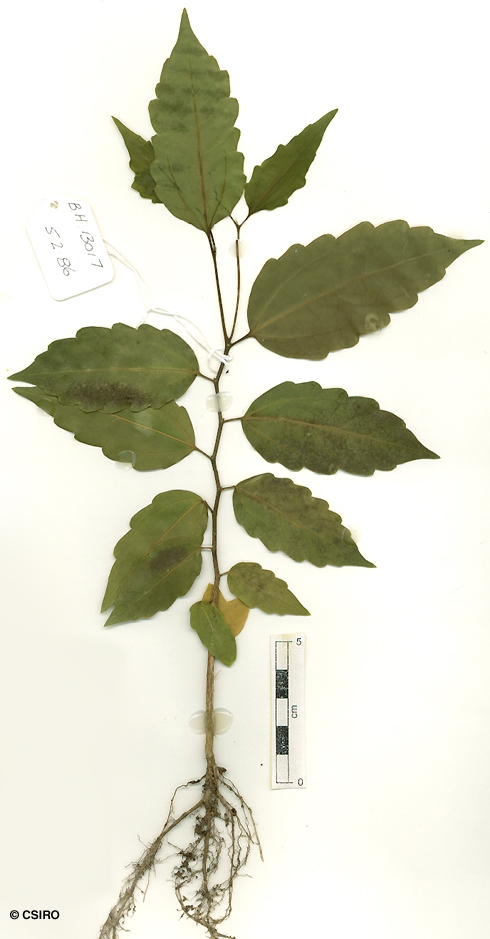Australian Tropical Rainforest Plants - Online edition
Celtis paniculata (Endl.) Planch.





Planchon, J.E. (1848) Annales des Sciences Naturelles, Botanique ser. 3, 10 : 305.
Investigator Tree; Silky Keltis; Native Celtis; Native Hackberry; Silky Celtis; Celtis, Silky; Tripewood
Blaze speckling quite conspicuous resembling salt and pepper. Blaze odour rather unpleasant resembling that of Poison Peach (Trema aspera). Fibrous stripes normally visible in the blaze.
Male inflorescence paniculate with about 30-60 flowers, each flower about 1-1.5 mm diam. Stigmatic arms bilobed in female flowers. Female inflorescence racemose, with about 5-10 flowers, each flower about 2 x 1 mm.
Fruits globular, about 9-11 mm diam., endocarp marked by reticulate ridges. Cotyledons crumpled and folded.
Cotyledons large, about 30 x 25 mm, apex divided into two large acute lobes. First pair of leaves lanceolate, margin with about 0-4 rather obscure crenate teeth on each side. At the tenth leaf stage: leaf blade ovate, apex acuminate; a few hairs present on the petiole; stipules elongate-triangular, papery and caducous. Seed germination time 48 to 71 days.
Occurs in NT, CYP, NEQ, CEQ and southwards as far as coastal central New South Wales. Altitudinal range in CYP and NEQ from sea level to 800 m. Grows in vine thickets, beach forest, monsoon forest and drier, more seasonal rain forest. Also occurs in Malesia, the Solomon Islands, New Caledonia and the Pacific islands.
Food plant for the larval stages of the Common Aeroplane and Tailed Emperor Butterflies. Common & Waterhouse (1981).
Produces a useful general purpose timber. Wood specific gravity 0.70. Cause et al. (1989).





